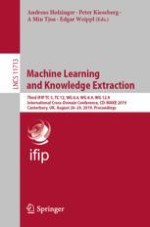2019 | OriginalPaper | Buchkapitel
Using Relational Concept Networks for Explainable Decision Support
verfasst von : Jeroen Voogd, Paolo de Heer, Kim Veltman, Patrick Hanckmann, Jeroen van Lith
Erschienen in: Machine Learning and Knowledge Extraction
Aktivieren Sie unsere intelligente Suche, um passende Fachinhalte oder Patente zu finden.
Wählen Sie Textabschnitte aus um mit Künstlicher Intelligenz passenden Patente zu finden. powered by
Markieren Sie Textabschnitte, um KI-gestützt weitere passende Inhalte zu finden. powered by
